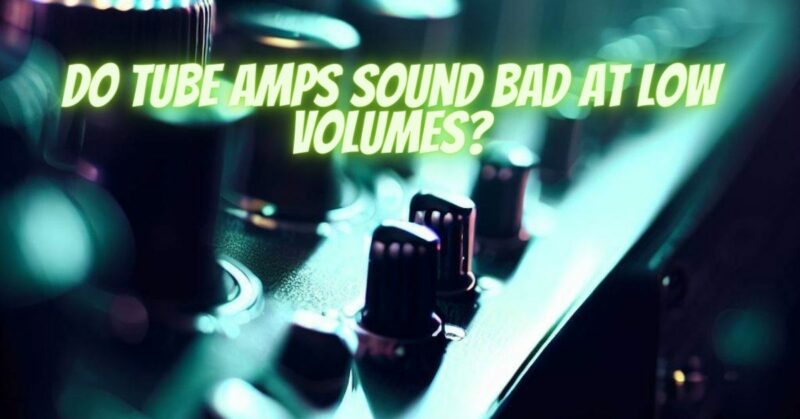The allure of tube amplifiers in the world of audio is undeniable, with enthusiasts praising their warm, rich, and harmonically complex sound. However, a persistent myth has lingered for years – the notion that tube amps struggle to deliver satisfactory audio quality at low volumes. In this comprehensive exploration, we aim to dispel this myth and delve into the intricate workings of tube amplifiers to understand their behavior across different volume levels.
Understanding Tube Amplifiers:
Before we address the myth, let’s briefly delve into the fundamental characteristics of tube amplifiers.
- The Warmth of Tubes:
- Tube amplifiers, or valve amplifiers, use vacuum tubes to amplify audio signals.
- Tubes are known for introducing harmonic distortion, which is often perceived as a warm and pleasing quality in the audio.
- Dynamic Response:
- Tube amps are celebrated for their dynamic response, providing a more gradual and natural transition between clean and distorted tones.
- Volume and Distortion:
- Traditionally, it’s believed that tube amps shine brightest when pushed to higher volumes, allowing the tubes to saturate and produce the desired harmonic distortion.
Addressing the Myth:
- Tube Amps and Low Volume Operation:
- Contrary to the myth, tube amps are not inherently incapable of delivering quality sound at low volumes.
- The perception of poor performance at low volumes may stem from the fact that tubes need to warm up to reach their optimal operating temperature.
- Power Scaling Technology:
- Modern tube amplifiers often incorporate power scaling technology, allowing users to adjust the output power to achieve the desired tonal characteristics at lower volumes.
- This technology enables tube amp enthusiasts to experience the coveted tube sound without disturbing neighbors or sacrificing audio quality.
- Tonal Adjustments:
- Tube amps offer a unique advantage in that their tonal characteristics can be adjusted by manipulating the volume and gain controls.
- At lower volumes, users can still achieve a desirable balance of clean and slightly distorted tones, showcasing the versatility of tube amplifiers across different volume settings.
- Consideration of Speaker Sensitivity:
- The choice of speakers plays a crucial role in the performance of a tube amplifier at low volumes.
- High-sensitivity speakers can efficiently translate the subtleties of tube-generated tones even at lower volume levels, enhancing the overall listening experience.
Real-World Applications:
- Home Listening Environments:
- Tube amps can be well-suited for home listening environments, where lower volume levels are often preferred.
- The unique tonal characteristics of tubes can be fully appreciated without the need for excessive volume.
- Recording Studios:
- Tube amps have a longstanding presence in recording studios, proving their worth not only at high volumes but also in capturing nuanced tones at lower levels.
In conclusion, the myth that tube amps deliver poor sound at low volumes is a misconception that obscures the nuanced capabilities of these amplifiers. With advancements in technology, modern tube amplifiers offer a versatile and enjoyable listening experience across various volume levels. Understanding the interaction between tubes, power scaling, and speaker sensitivity allows enthusiasts to harness the full potential of tube amplifiers, enjoying their unique sonic characteristics without compromise. Whether in a quiet living room or a professional recording studio, tube amps continue to defy the myth, providing an enduring and cherished contribution to the world of audio amplification.

